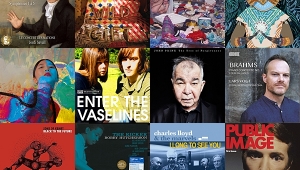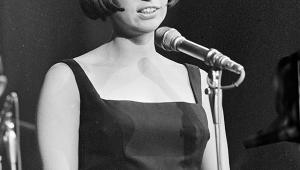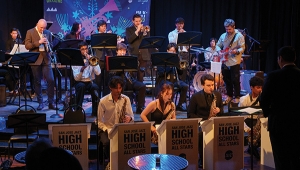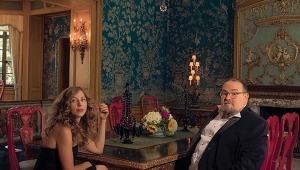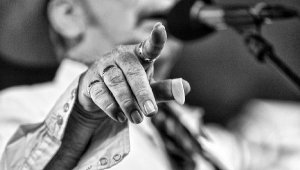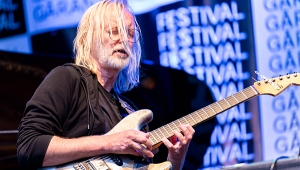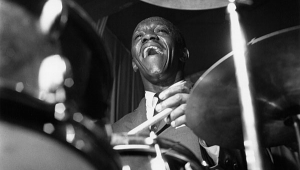| Columns Retired Columns & Blogs |
Book Review: The Cello Suites
The Cello Suites: J.S. Bach, Pablo Casals, and the Search for a Baroque Masterpiece, by Eric Siblin (New York: Atlantic Monthly Press, 2009); hardcover, 318 pp. $24.
In his lifetime, J.S. Bach (1685–1750) was an obscure figure. He never lived in a major city, he didn't work in the musical form—opera—that in his era could propel a composer to stardom, and his style seemed antiquated to many. Bach saw a mere nine of his compositions published; when his consummate masterwork, The Art of the Fugue, appeared the year after he died, it sold just 30 copies.
 Eric Siblin includes these and countless other facts in The Cello Suites, a book that will fascinate anyone who loves Bach's music. He notes, for instance, that Bach's four musical sons kept his work in circulation, that Mozart was mightily impressed by a motet he heard at a Leipzig church, and that the 12-year-old Beethoven raised some eyebrows when he performed The Well-Tempered Clavier in Vienna.
Eric Siblin includes these and countless other facts in The Cello Suites, a book that will fascinate anyone who loves Bach's music. He notes, for instance, that Bach's four musical sons kept his work in circulation, that Mozart was mightily impressed by a motet he heard at a Leipzig church, and that the 12-year-old Beethoven raised some eyebrows when he performed The Well-Tempered Clavier in Vienna.
Young Ludwig's performance did nothing for Johann Sebastian, but a revival did get underway after Felix Mendelssohn organized and conducted a performance of Bach's St. Matthew Passion in Berlin in 1829. The 20-year-old Mendelssohn's talents as a promoter apparently equaled his compositional gifts—Prussia's King and Crown Prince graced the audience, along with the poet Heinrich Heine and the philosopher G.W.F. Hegel. About a thousand people were turned away for lack of space.
The seed for Siblin's book, first published in 2009 and now available in various English-language editions as well as in German, had been planted nine years earlier, on the 250th anniversary of Bach's death. The journalist and former pop-music critic had attended a Toronto concert to hear Bach's Suites for Unaccompanied Cello, "music I knew nothing about." Perhaps, he surmises, he went because too many top-40 tunes continued to drum inside his skull. "I wanted music to occupy a central place in my life, but in a different way," he states.
This engaging volume, which documents Siblin's quest to understand Bach's six compositions for solo cello, also tells the story of the great composer's life and that of the Catalonian cellist Pablo Casals, who ultimately brought the works to the world's attention. Many of the facts woven into textual fabric glitter like metal threads as Siblin shifts the reader's focus from one protagonist to the other. The results are rich depictions of Bach in his 18th-century milieu, which limited his potential employers to aristocrats, municipalities, or the church; and of Casals in his 20th-century sphere, troubled by the Spanish Civil War and the subsequent fascist regime of Generalissimo Franco, which drove the cellist into exile.
Siblin also maps his own route to the music's core. He joins the American Bach Society and attends its biennial convention, where he finds himself face to face with one of the two extant paintings of the master, the portrait that commonly appears on album covers. He sees it as "far more severe and serious" than the Bach he comes to know, and the conference's keynote speaker, Christoph Wolff, the world's leading Bach scholar, agrees that it's an "official pose" that the composer had surely hoped would "shape [his] image."
At the suggestion of Walter Joachim, Siblin takes cello lessons for "insight" into the Cello Suites. Joachim was a familiar figure on the sidewalks of Siblin's Montreal neighborhood, but the writer approaches him only after overhearing him utter the word cello during a conversation. It turns out that the frail yet determined 89-year-old, "shuffling along .†.†. with a cane, gingerly negotiating the street corners like so many landmines strewn between his high-rise apartment building and a café he favoured," had been the Montreal Symphony Orchestra's first cellist. Joachim had heard Casals play in D¸sseldorf in 1927, and had shadowed him on his tour to nearby cities in the hope of absorbing as much technique as possible.
Siblin talks with several cellists during his book's long gestation period, including the eminent Mischa Maisky, who surprises him by agreeing to an interview. Buzzed through a security gate at the Russian émigré's art-deco mansion south of Brussels and greeted by a maid, he feels "like a detective attempting to pry information out of some wealthy eccentric who had no business talking to me. My reason for being there—that I was writing a book about the Bach Cello Suites—seemed an unlikely story."
Siblin describes Maisky as "a small man with a bird's nest of gray hair and a beard that would not look out of place on an Afghan mountain tribesman. He has full lips, a hawkish nose, and an attractiveness that is Slavic, feudal, and a touch melancholic. He was wearing a thick gold dog collar around his neck, blue pajama-type pants, small dark slippers, and a black T-shirt with a caricature of a cellist. The effect was midway between Rasputin and Liberace. He was immediately likeable."
The author's colorful prose conveys substantial charm, and reveals a first-rate travel writer's sense of place. It's as if we're with Casals when, in 1890 and barely into his teens, he wanders with his father toward the bookstore where they will serendipitously uncover a Bach score titled Six Sonates ou Suites pour Violoncelle. We stroll with them near Barcelona's Columbus monument, "towering sixty-two metres above the eight bronze lions at its base . . . a fiercely proud Columbus, the world's highest." We leave behind "the singing birds of the Ramblas [for] the tangle of narrow, twisting streets near the waterfront." We pass "ironwork balconies . . . draped with laundry and flowers. The occasional stone gargoyle scream[s] mutely. There['s] a faint smell of the sea."
The biography of Siblin on his website (http://ericsiblin.com) notes that he holds an MA in history, and indeed he skillfully traces the historical currents his two main subjects were caught up in. Like a multidimensional musical recording that puts the reader in the space the performers occupied, his verbal record sets biographical and musicological details neatly in context. Siblin vividly recreates both Bach and Casals.—David Lander
- Log in or register to post comments
